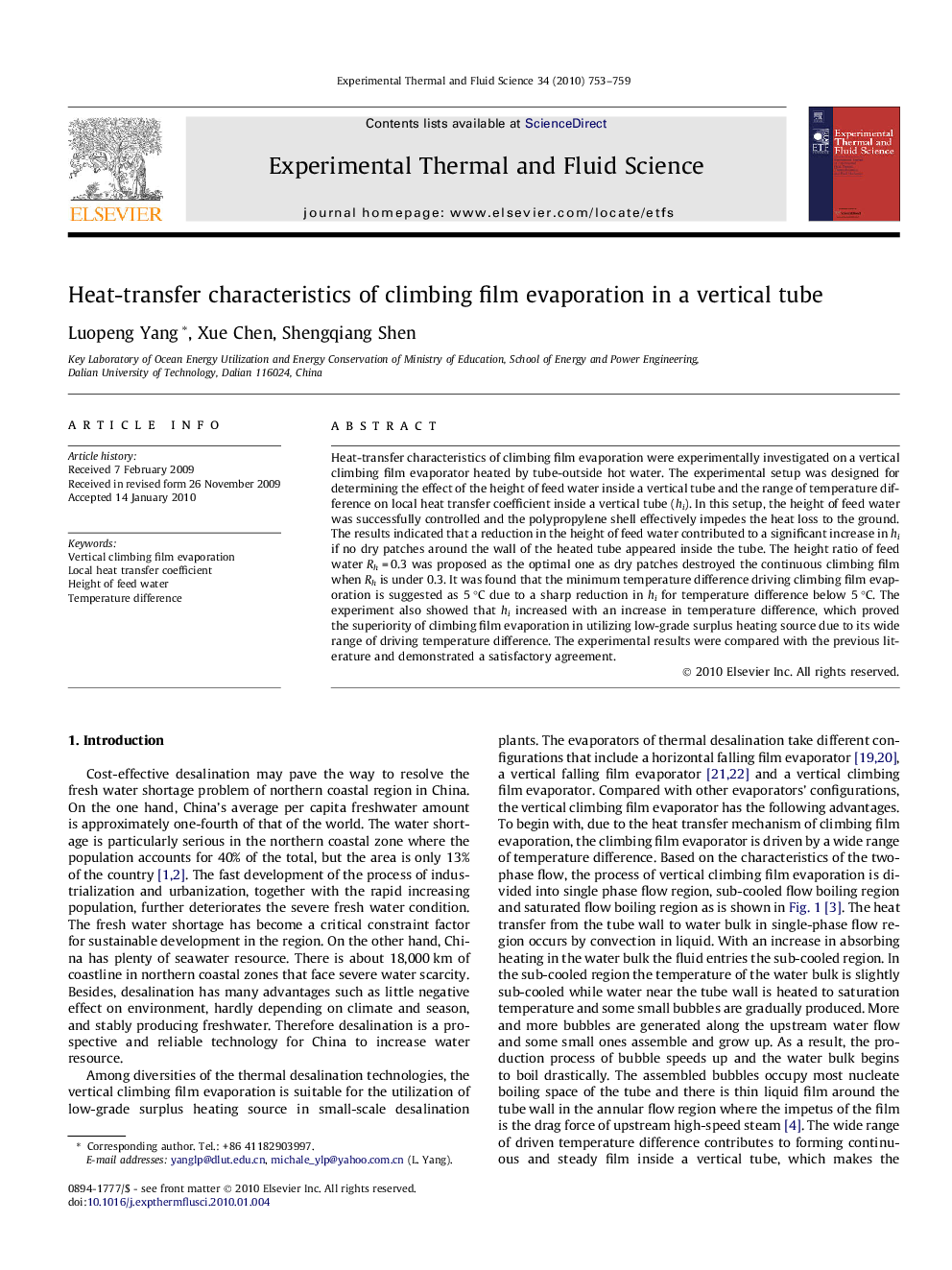| Article ID | Journal | Published Year | Pages | File Type |
|---|---|---|---|---|
| 652088 | Experimental Thermal and Fluid Science | 2010 | 7 Pages |
Abstract
Heat-transfer characteristics of climbing film evaporation were experimentally investigated on a vertical climbing film evaporator heated by tube-outside hot water. The experimental setup was designed for determining the effect of the height of feed water inside a vertical tube and the range of temperature difference on local heat transfer coefficient inside a vertical tube (hi). In this setup, the height of feed water was successfully controlled and the polypropylene shell effectively impedes the heat loss to the ground. The results indicated that a reduction in the height of feed water contributed to a significant increase in hi if no dry patches around the wall of the heated tube appeared inside the tube. The height ratio of feed water Rh = 0.3 was proposed as the optimal one as dry patches destroyed the continuous climbing film when Rh is under 0.3. It was found that the minimum temperature difference driving climbing film evaporation is suggested as 5 °C due to a sharp reduction in hi for temperature difference below 5 °C. The experiment also showed that hi increased with an increase in temperature difference, which proved the superiority of climbing film evaporation in utilizing low-grade surplus heating source due to its wide range of driving temperature difference. The experimental results were compared with the previous literature and demonstrated a satisfactory agreement.
Related Topics
Physical Sciences and Engineering
Chemical Engineering
Fluid Flow and Transfer Processes
Authors
Luopeng Yang, Xue Chen, Shengqiang Shen,
